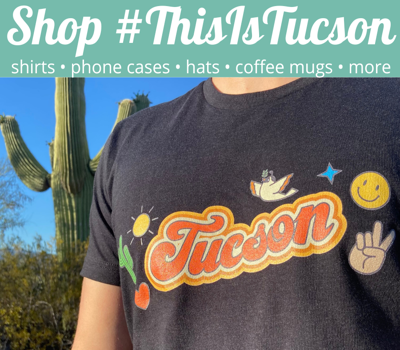DULUTH, Ga. — No scene dominated U.S. politics since 2015 quite like Donald Trump on stage, waxing on for an hour-plus in front of a chorus of red "Make America Great Again" hats.
The former president and Republican nominee calls his stream-of-consciousness style of speech "the weave," whipsawing from dystopian warnings to light-hearted storytelling to policy pronouncements.
"You make a speech, and my speeches last a long time because of the weave, you know, I mean, I weave stories into it," Trump explained last week to popular podcaster Joe Rogan. "If you don't — if you just read a teleprompter, nobody's going to be very excited. You've got to weave it out. So you — but you always have to — as you say, you always have to get right back to work. Otherwise, it's no good. But the weave is very, very important. Very few weavers around. But it's a big strain on your — you know, it's a big — it's a lot of work. It's a lot of work."

Republican presidential nominee former President Donald Trump arrives Wednesday at a campaign rally at Rocky Mount Event Center in Rocky Mount, N.C.
Over the closing weeks of his third presidential campaign, Trump's presentation grew as disjointed as ever and notably darker.
Still, the crowds keep coming, cheering his nationalistic populism, laughing at the insults and chanting along, fists raised, with his benedictory pledges to make America strong, proud, healthy, wealthy and, of course, great again.
Trump's speeches all employ consistent devices and themes. He wields humor, braggadocio, anecdotes, grievances and grand promises. There are nonsequiturs, fantastical falsehoods and withering attacks on opponents. He sprinkles in vulgarities and superlatives. There are even the occasional stints read from the teleprompters he mocks when any other politician uses them — and then claims that he doesn't use teleprompters or doesn't need them.
Vice President Kamala Harris, Trump's Democratic opponent, encourages voters to see him in person, suggesting doing so only affirms that he is erratic and unfit for office. Other critics compare his extended showmanship to authoritarian leaders. Or they argue "the weave" is simply cover for the cognitive decline of a 78-year-old who would be the oldest newly sworn-in U.S. president in history.
Here is a study of "the weave," deployed on one night last week in suburban Atlanta.

Republican presidential nominee former President Donald Trump walks out Oct. 23 at a Turning Point Action campaign rally in Duluth, Ga.
Epic entrance and a few details
Perhaps the most important moment is Trump's entrance. His walkout music, a device that evokes his brief turn as a professional wrestling promoter, is Lee Greenwood's "God Bless The U.S.A." The former president stands on stage, silent and serious, as the crowd sings along.
At a recent Turning Point USA rally in Duluth, Georgia, pyrotechnics and large video screens flanking him at center stage added to the effect, as his on-screen likeness towered over the crowd.
He relaxed and praised his audience as "thousands of proud, hardworking Americans and patriots, which is what you are."
Then, in a more formal tone he seemed to shift to the prompters: "I'd like to begin by asking a very simple question. Are you better off now than you were four years ago?"
It's the famous question Republican Ronald Reagan used to defeat Democratic incumbent Jimmy Carter in 1980, and Trump uses it to tie Harris to President Joe Biden.
The crowd in Duluth yelled "no," and Trump moved to sweeping promises, hyperbole and superlatives that doubled as indictments of Biden and Harris.
A major Donald Trump election rally in New York has been condemned over racist comments by several speakers and anti-immigrant rhetoric.
"I will end inflation. I will stop the invasion of criminals into our country," he pledged, suggesting all migrants are criminals.
"We're going to fix our nation fast," he said. "America will be bigger, better, bolder, richer, safer and stronger than ever before. This election is a choice between whether we will have four more years of incompetence, failure and disaster, or whether we will begin the four greatest years in the history of our country."
Biden and Harris aren't just bad, in Trump's language. He called them "the worst president" and "the worst vice president" ever. Harris, he warned, would "destroy your family's finances forever." He blames Harris alone for "an open border," taking liberties with immigration and crime statistics and suggesting, falsely, that the vice president singlehandedly controls U.S. immigration policy.
He slipped in that Harris "got no votes" — a reference to her becoming the Democratic nominee after Biden dropped out following party primaries. "Therefore," Trump insisted, "she is a threat to democracy" — projecting onto his opponents their most aggressive attacks against him.
He lampooned Harris as a "low-IQ individual" and "not a smart person." Thousands laughed at each broadside.

Supporters listen Oct. 23 during a campaign rally with Republican presidential nominee former President Donald Trump in Duluth, Ga.
Transitions never necessary
He moved to expressions of compassion for Hurricane Helene victims and then jarringly to one of his favorite subjects: his public standing.
"Our hearts are with you and we are praying for you — the polls, despite everything. The polls," he said. "Do you see what's happening here? Here, Alabama, Florida, South Carolina, Tennessee? And Georgia. The polls. The polls are through the roof."
During an audible crowd lull, he dropped in his signature "MAGA" slogan to elicit cheers.
He bounced back to the prompter for numbers framing inflation's effects on U.S. households. He asked, "should I sue" CBS and "60 Minutes" for, in his words, manipulating Harris interview answers that were "from the loony bin."
"It's election interference and fraud," he said, projecting charges that are part of felony criminal cases against him.
Trump mocked Harris for saying she will raise taxes, but misrepresented her proposals as applying universally. (She targets corporations and the wealthiest individual filers.)
Trump's 2017 tax cuts, meanwhile, were "the largest tax cuts in history," he said. (A charitable interpretation, at best, that ignores inflation.)
More election coverage:
Election 2024: Voting in America
To help make sense of the way America picks a president, this special series is examining and explaining the ins and outs of U.S. elections.
In the 2024 general election, the AP will declare winners in nearly 2,000 uncontested races, compared with about 4,500 contested races.
Before there was a FiveThirtyEight model, or a New York Times election night needle, or 13 keys revealing “how presidential elections really work,” there was an economist named Louis Bean.
As thousands of counties and towns report vote totals, it can be hard to figure out when the results reported so far will reflect the outcome.
It is the concept of random selection that allows a relatively small group of survey participants to represent the country as a whole.
Polls are useful tools, but it's important not to overstate their accuracy. After all, a polling organization can't talk to every single person in the country.
Elections are human exercises that, despite all the laws and rules governing how they should run, can sometimes appear to be messy.
Officials seek to demystify a process that in recent years faced intense scrutiny, misinformation and false claims of widespread fraud.
There have been 36 recounts in statewide general elections since America's most famous one in 2000.
A few bellwether counties in the key battleground states are likely to decide the outcome — as they did the past two presidential elections.
The Electoral College is the unique American system of electing presidents. It is different from the popular vote, and it has an outsize impact on how candidates win campaigns.
An uncommon system of voting could be central to which party controls the U.S. House this fall — or even the presidency.
"This decentralized nature of the elections is itself a deterrent," said Republican Trey Grayson, a former Kentucky secretary of state and the advisory board chair of the Secure Elections Project.
The few counties that have attempted the massive task to count ballots by hand have found the process more time-consuming, expensive and inaccurate than expected.
Voting machines have been at the center of a web of conspiracy theories, with false claims that they were manipulated to steal the presidency from Donald Trump.
So you want to cast a ballot on Election Day? Or maybe vote by mail? It helps to know the rules.
The Associated Press has created a series of videos explaining how elections work in the United States.
Roughly 50 years ago, about 95% of voters cast their ballots in person on Election Day. That number has fallen gradually as states have provided Americans with more options.


























